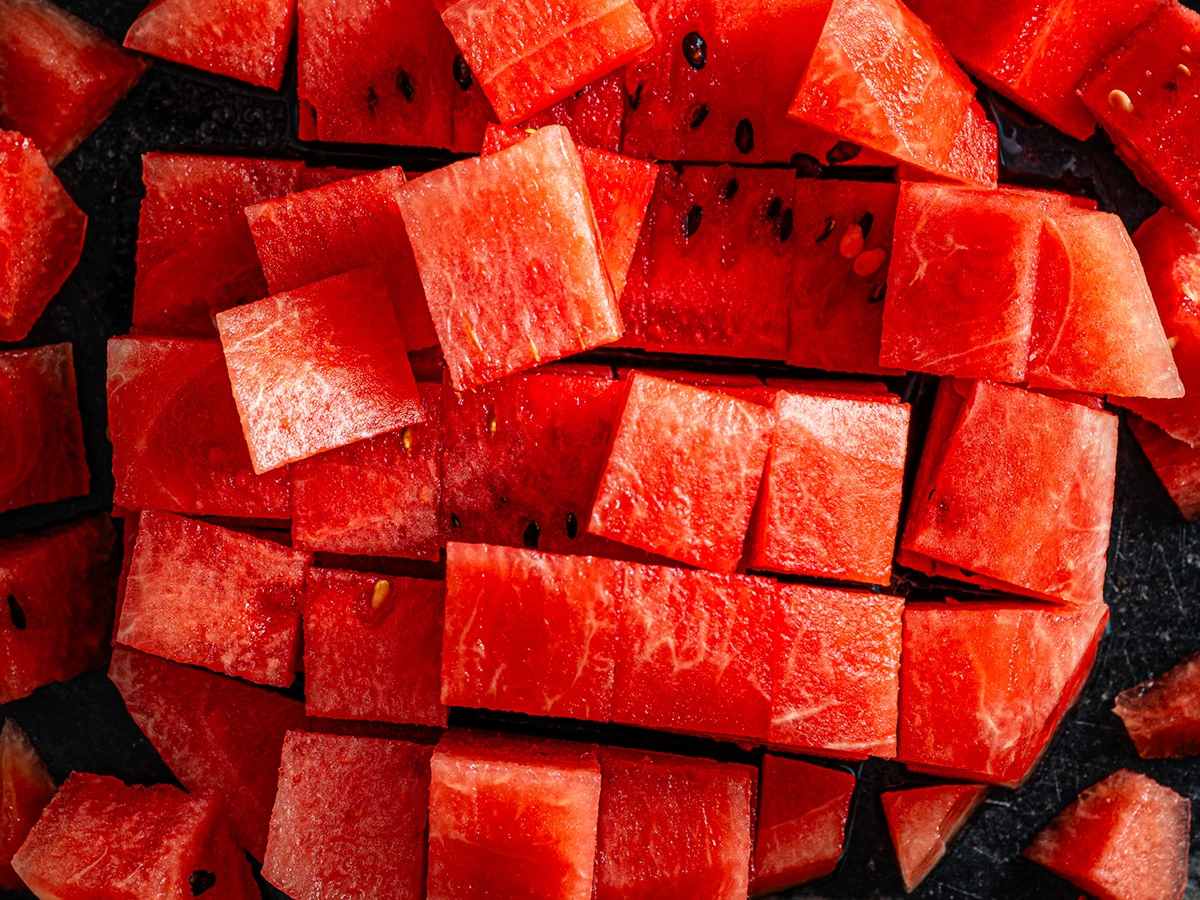How to cook rice: the ultimate guide
Senior Food Editor
Heather Taylor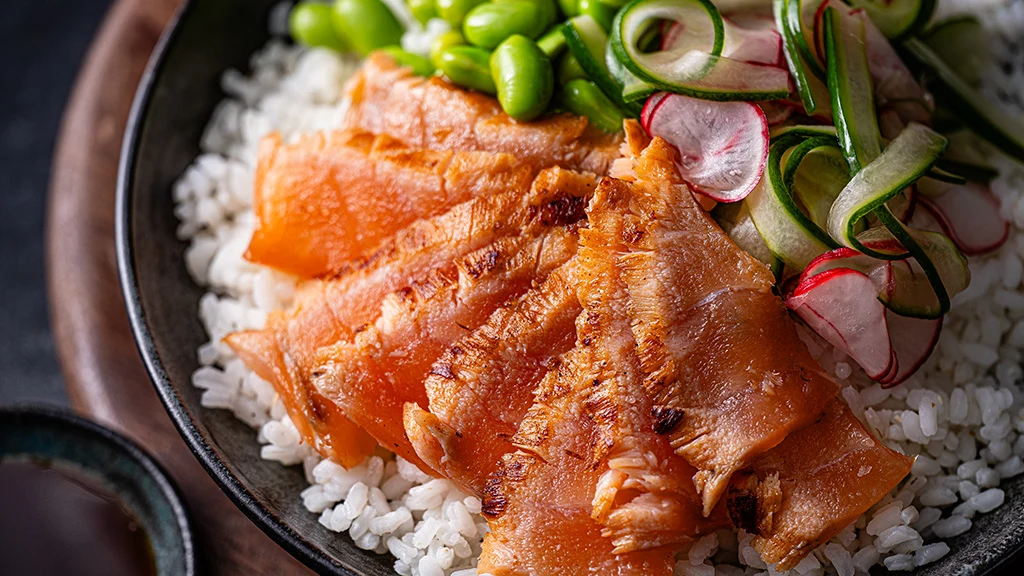
Understanding the different types of rice
There are lots of varieties of rice out there, each of which lend themselves to different cooking techniques. When choosing your rice, think about the texture of your dish and the cuisine you’re cooking.
Basmati rice
These elongated grains cook to a fluffy texture – ideal in pilafs or alongside curries.
Long grain rice
Longer grains lead to a looser texture, and choosing an easy-cook version means the rice is less likely to stick.
Sushi rice
With short, sticky grains, sushi rice is ideal for homemade sushi or Japanese-inspired rice bowls.
Jasmine rice
Great for Thai dishes, jasmine rice has a subtly floral flavour and slightly sticky texture.
Wholegrain rice
Robust and nutty, wholegrain rice has a firmer texture and is a great source of fibre.
Risotto rice
Plump grains, ideal for coating in butter, then cooking into a creamy risotto.
Pudding rice
Larger grains which will absorb flavours and go gorgeously creamy.
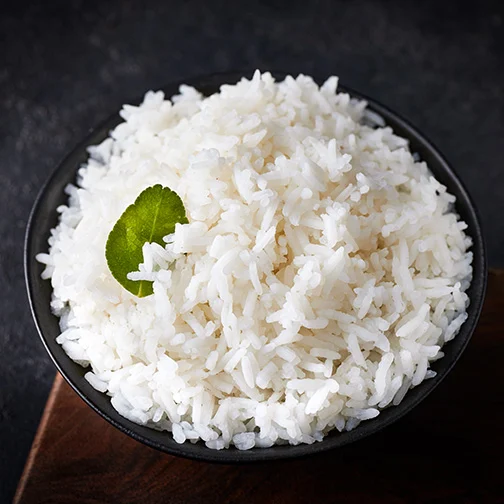
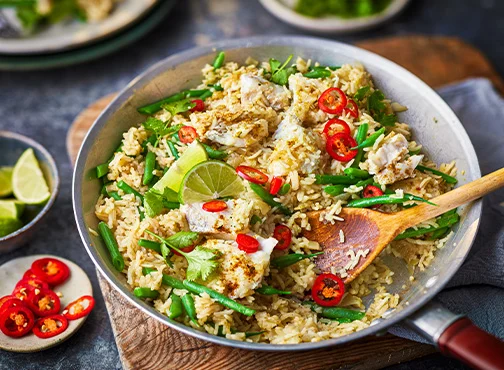
How to cook rice in 5 easy steps
This easy technique works for rice that's cooked using the absorption method, such as basmati.
Measure a cup of rice per two people.
Wash your rice in a couple of changes of water until the water runs clear and add to a pan.
Using the same cup, measure 1.5 times as much cold water to rice, and add to the pan with a good pinch of salt.
Bring to the boil, stir briefly, then turn down to a low simmer and cover with a lid (use a pan with a clear lid). Cook for 10 minutes or until all the water has been absorbed and there are small air pockets forming in the top of the rice.
Allow to stand, covered, for a further 4 minutes before fluffing up the grains with a fork.
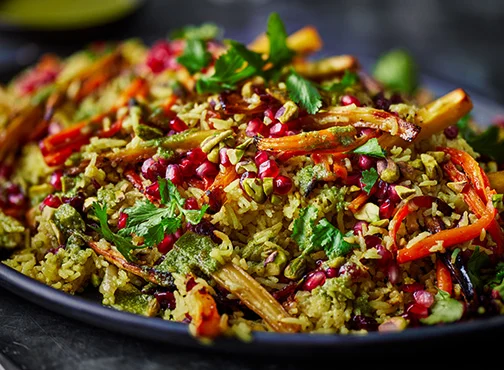

Top rice ideas to try
Sushi rice – smoked salmon sushi bowls
Risotto rice – no-stir smoked trout and spring onion risotto
Basmati rice – honey-roasted parsnip and carrot rice pilaf
Pudding rice – blood orange and kefir rice pudding
Frozen rice – pineapple egg fried rice

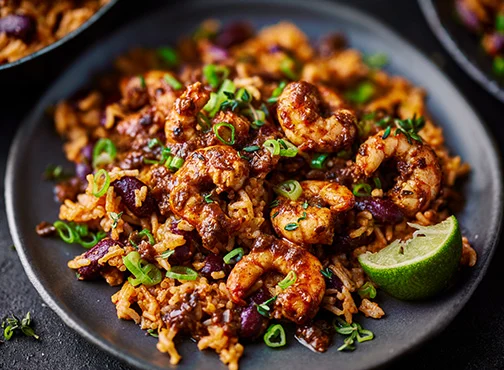
Top tips for cooking rice
The technique you use to cook your rice depends on the dish you’re making, but following a few rules of thumb will make sure your rice is just right.
Should you wash rice?
Usually yes. Washing rice removes the starch and will stop it becoming clumpy. The exceptions to the rule are dishes where you want the rice to release starch, such as risotto, to create a creamy texture.
How much water do you need to cook rice?
It depends on the variety. For basmati rice, use one and a half times as much water than rice, but for brown rice it’s double the amount. Refer to the instructions on the pack, as even the same varieties of rice across different brands can vary.
How do you stop rice getting sticky?
Try to avoid stirring it too much, as this will release more starch, and rinse the rice first. If all else fails, a knob of butter can help separate overly sticky rice.
Can you reheat rice?
As long as it’s properly cooled and stored, and heated until piping hot, rice is perfectly safe to reheat. Use to make egg fried rice, arancini, or fritters.
Can you freeze rice?
Yes – again, it’s key to cool, store and freeze the rice safely and avoid letting it sit at room temperature for too long. Be sure to defrost in the fridge and reheat thoroughly.
Published 8.14.2025



